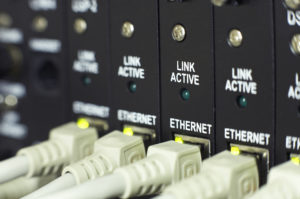
Hubs, switches, routers, and access points are primarily used to link computers together on a network, but each has different functionalities.
The rapid advancement of computer technologies has introduced many appliances, devices, and gadgets. In fact, hubs, switches, routers, and access points are primarily used to link computers together on a network, but each has different functionalities. This article will explain the differences between these devices.
Hubs
Hubs connect computers on a network to communicate with each other. Each computer enters the hub with a cable, and data sent from one computer to another passes through the hub. Additionally, a hub can’t pinpoint the source or destination of the data it receives. So, it sends the information to all connected computers, including the one that sent it. Plus, a hub can receive or transmit information, but not simultaneously.
Switches Function the Same Way as Hubs
In contrast, switches work the same way as hubs, but they can pinpoint the intended destination of the data they receive. So, switches can send that information to only the computers that it is designed for. In addition, switches can receive and send information simultaneously and faster than hubs. Moreover, switches are ideal to use on a home or office network where you have more computers. They are also useful if you want to use the network for activities that require transferring significant data between computers.
Routers are the Intermediary
Furthermore, routers are intermediary devices that allow computers and other network components to communicate or transfer information between two networks. For example, between the Internet or your home network. Also, routers are remarkable for their capability to direct network traffic. They can also be wireless or wired (using cables). Plus, routers usually provide built-in security, like a firewall.
Wireless Access Points
Access points offer wireless access to a wired Ethernet network. An access point enters a hub, wired router, and switches and releases wireless signals. This approach allows computers and devices to connect to a wired network wirelessly.
Fortunately, you can move from one location to another and keep having wireless access to a network. For example, you are usually connecting through an access point when you connect to the Internet using a public wireless network in public areas. In some cases, you don’t need a wireless access point when some routers are equipped with a wireless access point capability.
Get in Touch with FiberPlus
FiberPlus has been providing data communication solutions for over 25 years in the Mid-Atlantic Region for a number of different markets. What began as a cable installation company for Local Area Networks has grown into a leading provider of innovative technology solutions improving the way our customers communicate and keeping them secure. Our solutions now include:
- Structured Cabling (Fiberoptic, Copper and Coax for inside and outside plant networks)
- Electronic Security Systems (Access Control & CCTV Solutions)
- Wireless Access Point installations
- Public Safety DAS – Emergency Call Stations
- Audio/Video Services (Intercoms and Display Monitors)
- Support Services
- Specialty Systems
- Design/Build Services
- UL2050 Certifications and installations for Secure Spaces
FiberPlus promises the communities in which we serve that we will continue to expand and evolve as new technology is introduced within the telecommunications industry.